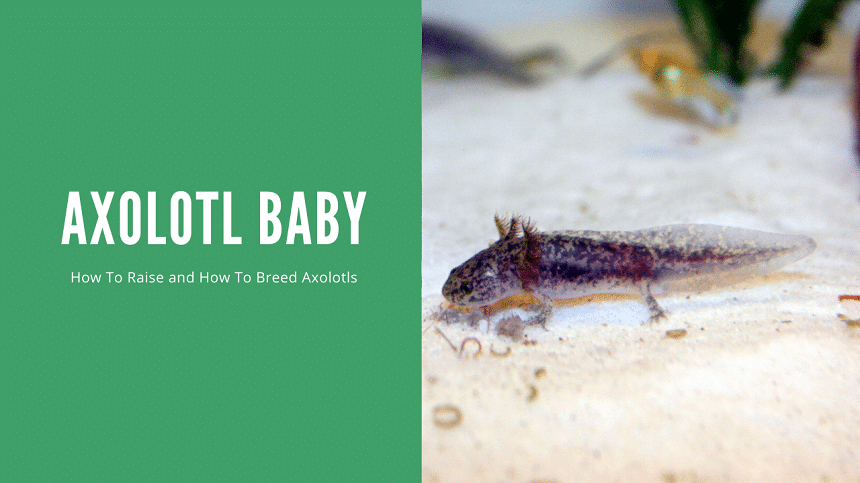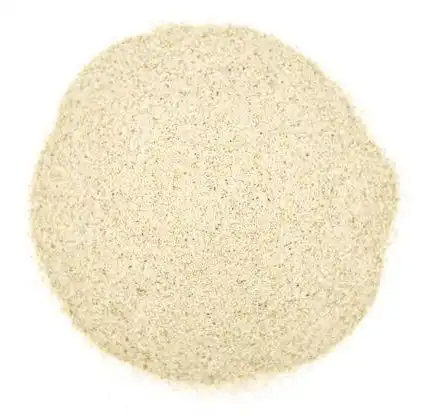Thank you for visiting! By the way… any links on this page that lead to products on Amazon and other stores/partners are affiliate links Aquarium Store Depot earns a commission if you make a purchase.
Would you like to raise your own Axolotl baby? Setting up a proper breeding tank and caring for the young after they hatch can seem quite daunting. Don’t throw in the towel yet, however, breeding Axolotls doesn’t have to keep you up at night. In this article, we will look at how to mate your Axolotls and give you some tips on what to do after the eggs hatch.
If you’re ready to embark on this new adventure, keep reading.
Where Do They Come From?
Axolotls can be found in lakes around Mexico City. These critters are critically endangered due to pollution and illegal trafficking. One of the lakes you can still expect to see an axolotl or two is Lake Xochimilco.
Axolotls are unusual amphibians that remain in their larval form even after they mature. This means the adults stay aquatic and keep their gills instead of taking to land like most other amphibians do. Be careful not to confuse an axolotl with the larval stage of a tiger salamander (a closely related salamander species).
Why Are Axolotls Special?
These critters have an amazing ability to fully regenerate missing limbs. For this reason, axolotls are being monitored in many labs to satisfy the curiosity of scientists. Along with lost limbs, they can also regrow other body parts such as the eyes, and even regenerate their spinal cords. This makes them very interesting due to the potential use this ability holds has in human medicine.
How Do They Breed?
Axolotls are egg-layers. The male and female will participate in a mating ritual when ready to breed. To start the courting process, the adult Axolotl male will nudge the hindquarters of the female to see if she is receptive to his advances. The video by Jules Askalotl provides an visual overview of the breeding process.
Once he establishes her willingness to participate, he’ll place himself in front of her and start to lead her around the aquarium. He’ll always make sure that his tail is touching her nose. As he leads her forward, he’ll deposit a packet of sperm known as a spermatophore.
The male will then lead the female over this packet until it lines up with her cloaca (vent or sexual organ). She then absorbs the sperm into her reproductive tract to fertilize her eggs. This process is referred to as indirect fertilization.
Over the next hour, the male will continue leading the female over several packets of sperm until the breeding process is complete. Once done, remove the male to allow the female some peace before the egg-laying starts.
The female will only lay her eggs around 12 to 72 hours later. Your Axolotl may lay up to 1500 eggs on the decor provided, so be prepared. Once the process is complete, make sure to either remove the eggs or the adults. These animals aren’t against eating their own eggs.
It’s also best to remove the breeding pair from community setups with other fish. Some fish will get stressed out by the erratic movements of the adult Axolotl pair during breeding.
What to Do When the Eggs Hatch
Axolotl eggs usually incubate for around 15 days before hatching if kept at 72 degrees Fahrenheit (22°C). The hatching will be delayed for a few days more in cooler water.
For optimal larvae growth, make sure to keep the water in the upper-temperature limit. It is also essential to keep the water quality pristine. Axolotl larvae kept in poor water conditions have very poor survival and growth rates.
This means that once the eggs start hatching, you’ll have your hands full with tank maintenance. You will need to do partial water changes every few days to keep the water clean while your baby Axolotls are growing. This is especially important if you have lots of them in one setup.
If you kept all your eggs in one place, you will need to separate your babies into several 20 gallon tanks once they are big enough to be moved. Make sure to not keep more than 100 babies in one place. It is possible to keep up to 200 young axolotls in one aquarium, but this may lead to several unnecessary injuries and even fatalities.
Aquariums with fewer offspring in them have fewer problems such as damaged fins or lost limbs and gills.
Feeding Requirements

Newly hatched Axolotls won’t start feeding immediately after hatching. They usually only need live foods around 48-72 hours after hatching. In the period between hatching and their first feeding, they will be sustained by the remaining egg yolk in their bellies. The yolk will be visible through the skin as a cream-colored mass.
During this time the young also won’t be moving. Don’t throw them out by accident because they seemed dead. Not moving is completely normal at this stage. You’ll see them start to wiggle around 2 to 3 days after they were born, this is your cue to start feeding them.
Baby axolotls aren’t the easiest to feed. These youngsters require small, live food items in large quantities to keep them sustained. Until the Axolotl larvae grow their front legs, they will also only respond to moving live foods.
Without their legs moving around is a bit challenging for them. This means that they won’t actively try to find food. Make sure to deposit the food in front of them to make sure they are eating. If you fail to provide the right food, they may start to eat each other.
Fortunately, unlike frogs, young Axolotls grow their front legs first. Until they reach this milestone, however, feed easily accessible live food such as newly hatched brine shrimp and daphnia. Once their front legs are developed, they will also have developed a sense of smell. This means it’s time to start introducing dead food items.
You can offer dead food items earlier, but you’ll need to use tweezers and wiggle them around to mimic the movement of live foods to entice your baby Axolotls to eat. This can be time-consuming, especially if you need to feed 1500 baby Axolotls. Rather stick to newly hatched brine shrimp and other foods that can wiggle around like daphnia.
What to Feed
Until a baby Axolotl grows its front limbs, you will be limited to only a few live food items. Here are some great snacks for your young pet:
- Newly hatched brine shrimp
- Daphnia
- Microworms
- Freshly chopped up blackworms (they wiggle for a long time after chopping)
Water fleas or Daphnia are an excellent live food offering for fish and fry
Once the baby Axolotl developed its front legs, it will become more mobile and start to actively hunt. At this point, you can start to introduce some dead food items along with fast-moving live food. Here are a few options:
- Frozen brine shrimp
- Frozen bloodworms
- Live mosquito larvae
- Live brine shrimp
- Live bloodworms
- Earthworms
Once the baby axolotl grows its hind legs, it can be fed exactly the same as an adult with the exception of the frequency in feeding. Baby axolotls need a lot of food to grow. To keep them healthy, you will need to feed them at least twice a day.
Once these little amphibians have all their legs, you can also start to introduce foods such as Axolotl pellets to their diet. Also, make sure to feed a variety of live and dead food for optimal health and growth. If you can’t find pellet food specifically for Axolotls, you can try feeding others specifically meant for carnivorous fish.
When feeding your baby Axolotls, make sure not to overfeed. If that happens, the uneaten food will start to rot and affect your water quality. Make sure to remove any uneaten food. Next time feed just enough to make sure they can eat all of it in 5 minutes tops. If it’s not eaten, remove it.
Tank Setup

Just like adult Axolotls, babies also need a proper setup to stay healthy. Here’s what you need to know to set up a tank for axolotl babies (Egg picture source).
Tank Size
The minimum tank size requirement for Axolotl larvae is also 20 gallons. Unlike an adult that requires the whole 20 gallons to itself, you can keep up to 200 newly hatched axolotls in the same tank which isn’t that much of a cost.
Keeping that many larvae together, however, is not advised. It’s better to stick to around 100 baby Axolotls together in a tank. This lower number helps to avoid unnecessary death and lost legs.
Once the larvae develop their front legs, you’ll need to divide the colonies into smaller ones yet again. This means that you’ll need several 20-gallon tanks or a super large aquarium. Keep in mind that bigger is always better. More water means fresh water for longer periods between water changes.
For the breeding tank, use a 20-gallon tank. This leaves just enough space to prevent the female from refusing to participate in the mating ritual.
You can keep the eggs in a 10-gallon tank altogether until they hatch. After that, make sure to divide the larvae into smaller communities or transfer them to a larger aquarium.
Water Parameters
Baby Axolotls are a bit more sensitive to water parameters than adults. For this reason, you need to be more vigilant when it comes to aquarium maintenance. Since you’re keeping several larvae in the same tank, you’ll also need to do more water changes to keep the water clean.
Skipping a water change can lead to water quality problems which in turn causes deaths. Also, make sure to treat any water before you put it into your tank. Tap water contains chemicals such as heavy metals and chlorine that will cause deaths.
Here are the water parameters for keeping your Axolotl larvae healthy:
- Water temperature: Keep the water temperature in the range of 59 to 73 degrees Fahrenheit (15 – 23°C). The ideal temperature for larvae is between 70-72°F (21-22°C).
- pH: Keep the pH in the range of 6.5 to 8.0. The ideal pH for baby axolotl is 7.4 – 7.6.
- GH: 125-250ppm (7-14deg)
- kH: 53-143ppm (3-8deg)
- Ammonia (NH3): 0 ppm
- Nitrite (NO2-): 0 ppm
- Nitrate (NO3-): <60 ppm
Water Temperature
A baby Axolotl does well in the same temperature range as the adults. For optimal growth, however, you want to keep this baby in slightly warmer water. 72 degrees Fahrenheit (22°C) is a good start for hatching eggs and growing out newly hatched larvae.
As your baby axolotl grows, you can slowly lower the temperature to between 60 and 64°F (16 – 18°C). This will allow the baby to slowly adapt instead of getting a shock.
Make sure to put an accurate thermometer in your tank to monitor water temperature changes. If the aquarium water is too warm, your baby axolotl will become stressed. In most cases, you will require a water chiller if the water gets too hot too often or for prolonged periods of time.
In an emergency, you can add frozen cubes of Axolotl-safe water to your aquarium to help cool it down. In the rare event where it gets too cold, simply add an aquarium heater to get it up to the right temperature.
Substrate
The best substrate for Axolotl youngsters is sand. Sand provides some grip on the bottom of the aquarium as well as enrichment. Just like adult axolotls, the youngsters also like to dig through the substrate.
Natural sand is excellent for bottom feeder fish to forage around in.
Sand is also safe if accidentally swallowed due to the very small size of the particles. Any kind of gravel should be avoided in larval tanks since it can cause injury and severe health problems.
Setting up a bare bottom aquarium is also possible. This will make cleaning much easier since you can simply suck up any solid waste during a water change.
Tank Decor
It’s always a good idea to have some decor in your tank. A completely empty tank will cause stress to your Axolotl larvae. Aquarium decorations you can consider include the following.
Plants
Plants are great in Axolotl tanks. They provide cover as well as enrichment. Keep in mind that the plants need to grow well in minimal lighting. Low light plants are the best candidates for an Axolotl tank.
Axolotls are nocturnal. For this reason, they have quite poor eyesight and prefer a dark environment. If the lighting in your tank is too strong, your axolotls will always be hiding from it.
It is also best to pick floating plants or those that prefer to grow on other ornaments like Anubias Nana or Java Fern. Axolotls dig a lot. This means that they will disturb and dig up any plants in the substrate.
Driftwood
Driftwood makes excellent places for an Axolotl to hide in and explore. It will also provide a surface for some kinds of plants to grow on. Driftwood also looks great when used on its own.
Hides
It’s very important to provide your Axolotl youngsters with places to hide. You can do this by adding ceramic pipes or other structures to your setup. This is even more important in tanks with lights. Axolotls have very sensitive eye lids and need to escape to a dark corner when the lights are on.
Rocks
Rocks are also an excellent addition to your breeding setup. A large flat rock is ideal for your Axolotls to breed on. Rocks can also be stacked and used to create shelters and hiding spots for the young. If done right, you don’t need anything else in your tank. Rocks make excellent decorations and can also be used to grow some kinds of plants.
Filtration Needs
Baby Axolotls need slow-moving water in their tank. For this reason, you can’t just put any filtration system in there. They also need a strong filtration system due to being such messy creatures, so it’s important that your filter can circulate a large amount of water in a short amount of time.
The best filters for baby Axolotls are sponge filters. These filters can circulate water quite quickly without creating a lot of flow.
Biofoam filters are quite popular for Axolotl setups. These sponge filters will help to clean the water while allowing beneficial bacteria to grow in the filter media. The bacteria in turn will help to keep your water parameters stable.
Baby Axolotls are quite sensitive to parameter changes so it’s best to make sure the tank is properly cycled before breeding with your adults.
FAQs

Why are my baby axolotls dying?
The most common reason for premature death is infections. Infections can happen due to poor water quality or overcrowding. Make sure to do daily water changes and separate your young into tanks of 100 Axolotls each.
How often should I feed them?
Baby Axolotls have voracious appetites. For this reason, it’s best to feed them once or twice a day.
What do they eat?
Baby Axolotls eat small live foods. You can try newly hatched brine shrimps, daphnia, chopped blackworms, and microworms.
How do I identify their gender?
The easiest way to identify gender is to check the cloaca (the opening or vent by the tail). The male Axolotl has a very prominent cloaca that protrudes slightly from the belly. The female has a much smaller cloaca that sits almost or even completely flat against the belly.
Final Thoughts
Now that you know a bit more about breeding Axolotls and caring for the young, you should have minimal problems doing it yourself. Just remember to set up a decent breeding tank with a proper filtration system and once the young hatch, don’t feed them immediately.
If you have any other questions, don’t hesitate to comment below.
- About the Author
- Latest Posts
I’m thrilled that you found Aquarium Store Depot! Here you’ll find information on fish, aquariums, and all things aquatics related. I’m a hobbyist (being doing this since I was 11) and here to help other hobbyists thrive with their aquariums! I adhere to a high quality Editorial Process and Review products with real life field usage and practical analysis.








At what point can juveniles move from daily 100% water changes, to being in a sponge filter tank with less frequent water changes?
When this happens, what % of water should I change & how often should I change it?
Note: They are currently in separate small animal carriers (as seen at petsmart and other pet stores) with no filter, & 100% water changes daily. They are 2 months old and have their front feet. They will go into 10 gallon bare bottom tanks next, until they are 6 inches & able to go into my planted sand tank (36 gallons) safely.
It’s dependent on how high your nutrient levels are. If you keep running high nitrates, either your system is overstocked or you need to consider ways to lower it outside of water changes. Plants are the most natural way. You can use use media, but you need a filter with a large capacity, like a canister filter to pull it off effectively.